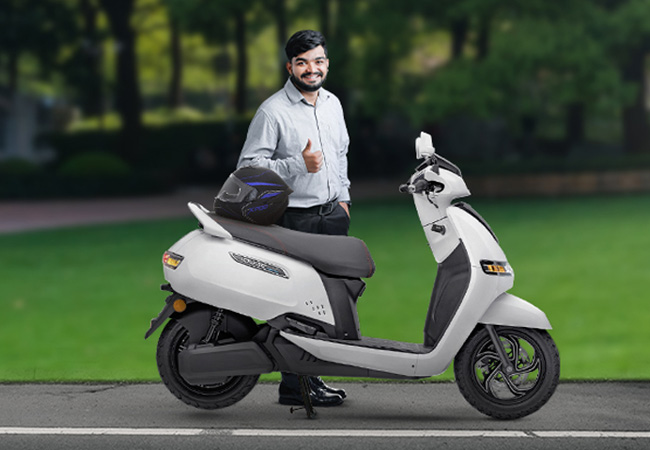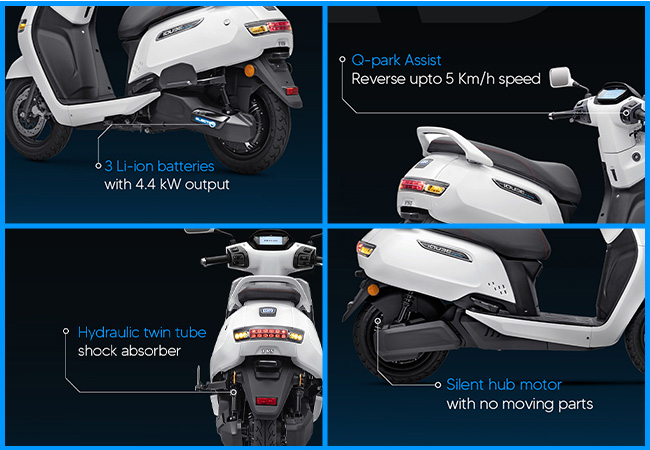Electric vehicle technology of the present day facilitates lower running costs, responsive performance and an ample range with the option of fast charging.
Along with an ever-expanding charging infrastructure, there are Indian Government schemes that incentivize owning an EV. This has resulted in an upward trend in the sales graph of electric scooters.
So what makes an electric scooter tick? Let’s understand the advantages of electric scooters in India and decipher the benefits from a cost perspective.
• Affordable Maintenance
Low maintenance is one of the key benefits of owning an electric scooter. That’s because an electric scooter has very few components in its design, including the battery, a BMS (battery management system), an electric motor and drivetrain components. On the other hand, an ICE scooter has an engine, air filter, fuel jet, transmission and several other components that require regular maintenance. Hence, the fewer moving parts in EVs not only reduce the maintenance cost but also limit the frequency of visits to the service centre, all the while increasing the service intervals.
• Low Running Costs
The rising petrol prices are driving up the running costs for ICE scooters. To put it into perspective, a 100 km roundtrip on a petrol scooter will cost you 2 litres of petrol. In comparison, the same distance will be covered on a TVS iQube electric scooter in ₹ 25-30 INR. The scooter comes with a 3kWh battery pack which requires 3 units of electricity for a full charge.
Note – Cost per unit of electricity is estimated at ₹ 7 per unit as per the national average.
• Zero Tailpipe Emissions
This is a distinguished advantage of EVs; they are eco-friendly vehicles. Petrol engines ignite fuel to generate power to propel the scooter; this results in the emission of gasses and pollutants into the air. Electric scooters, on the other hand, only have a motor that fetches power from the battery to drive forward. The power output is controlled by the BMS (Battery Management System). This makes electric scooters green and silent.
• Responsive Performance and Ease of Use
Electric scooters offer a smooth and linear acceleration with minimal NVH levels as compared to petrol-powered scooters. Furthermore, to tackle tight parking spaces, electric scooters come integrated with park assist / reverse parking feature which greatly reduces the time and effort to park your electric scooter or take it out of a tight space.
• Spacious seating and more luggage space
Since electric scooters do not house a lot of mechanical parts, and the battery is integrated within the floorboard, this enhances the space available for storage, both within the under-seat storage and the spacious leg room. For instance, the TVS iQube S has enough under seat storage space for up to two full-face helmets.
• Government Incentives and Rebates
The Indian Government offers several financial incentives to make owning an electric scooter more affordable. There are incentives from the central government as well as each state offering its own individual incentives, which are as follows: -
⮚ FAME subsidy
⮚ Reduction in GST for electric vehicles
⮚ Registration fee waiver
⮚ Road tax exemption
The government is also promoting PLI (Production-Linked Incentive) schemes to boost the manufacturing of EV components right from battery cells and powertrain to BMS etc. These are set to revolutionize the auto industry in India. The government itself plans to replace its ICE-powered vehicle fleet with an all-EV fleet in the near future.
On the whole, the benefits of owning an electric scooter go beyond cost savings. As technology evolves and infrastructure improves, owning an electric scooter as a primary vehicle is now becoming practical and convenient. Furthermore, the government incentives on offer and the environmental benefits of electric vehicles make owning an e-scooter a sensible choice.
Book Now
Note – Apart from the FAME subsidy from the Central Government, each state offers its own incentives and schemes with different slabs and criteria while purchasing an EV.
Also Read:
How to choose the right electric scooter?






